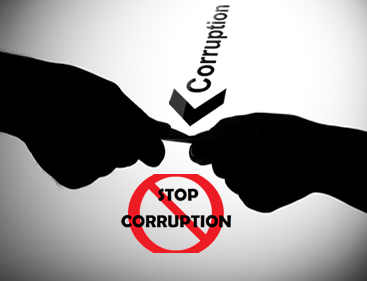
By Maureen E. BANSAH
A German engineering giant, Siemens AG, was rocked by a massive corruption scandal in 2006 that shocked the world.
The corruption involved more than $1.4 billion in bribes to government officials worldwide to acquire market advantage. Investigations uncovered the extensive bribery network within the company’s worldwide operations, exposing a deeply ingrained culture of corruption.
Although the company had announced its commitment to fighting corruption through corporate circulars and compliance programs, such commitment only existed on paper.
The scale of corruption distorted competition in host countries as Siemens gained market share and increased its product price.
Following prosecutions in the United States and Germany, Siemens paid more than $1.6 billion in fines, penalties, and disgorgement of profits.[1]
This scandal marked a watershed in the need for companies to address corruption in their operations.[2]
As commerce and business dealings cross borders, bribery and corruption risks become more significant. The annual global loss from corruption is estimated at $3 trillion.[3] Corruption can occur within a company, the supply chain, the market environment, or society.[4]
Whereas corruption is often considered a problem in the public sector, we should not disregard the role of the private sector in sustaining this problem.
Corrupt acts by corporate entities or agents include bid-rigging or collusive tendering in the procurement process and making illegal payments to civil servants for business advantage.[5] Powerful corporations can also use their influence to distort government policy in their favour.[6] In response to the need for businesses to take a stand, companies have implemented anti-corruption programs and measures to ensure corporate integrity.[7]
An anti-corruption compliance program is the system by which corporations and businesses can prevent, detect, and respond to corruption risks.[8] Failure of companies to establish or enforce anti-corruption programs can lead to scandals, which may significantly damage the company’s reputation and goodwill.
The companies may also suffer legal penalties, licence suspensions, financial losses, or shareholder lawsuits. For instance, regarding the Siemens scandal, the company, in addition to paying fines, paid dearly for its complicity through a decline in profits, loss of investment, and trust in the global market.
Notably, companies adopt anti-corruption programs either as a compliance measure or as part of their ethical strategy.[9] Both are vital in building a corporate culture that rejects bribery and corruption.
The author’s research and enquiries revealed that while Ghana lacks legislation mandating anti-corruption measures for companies, multinational companies in the country have voluntarily implemented such measures. However, the enforcement and subsequent impact of these measures in the fight against corruption remain uncertain.
This article discusses the corruption risks companies in Ghana may face, the common elements of anti-corruption programs, how companies can establish and implement such programs, and recommendations.
Corruption risks companies in Ghana face.
In the business context, corruption risks are vulnerabilities within a company’s system that may present opportunities for corruption to occur. They differ based on the unique nature of a company’s size, operations, and internal control systems. The following areas are identified as corruption risks in businesses that compliance programs can address.[10]
Companies in industries requiring extensive interaction with government officials may have higher corruption risks. For instance, companies in the extractive industry require multiple consultations with public officials to secure technical permits from the government to operate. The more interaction with government officials, the higher the risk of corruption.
Undoubtedly, geographical areas where corruption is endemic may influence the level of corruption risks a company may face. Many countries in Sub-Saharan Africa, like Ghana, record low scores on the Corruption Perception Index (CPI). In this vein, the corruption risks a company like Aker Energy A.S. may face in its Ghana office may be higher than in Norway’s.
Engaging with third parties can present a considerable corruption risk to companies. Certain projects are better executed by entering into business relationships with third parties, such as subcontractors, business partners, and other representatives. Third-party interaction can also be through joint venture agreements, establishing subsidiaries, and government lobbying.
This corruption risk is evidently present in Ghana, where many operations are riddled with middlemen. Again, third-party engagements may arise from statutory stipulations of local content requirements for specific industries that necessitate local personnel’s engagement in operations.
For instance, all corporations or agents engaging in petroleum activity must ensure local content and participation in their petroleum activities.[11] Where the local content involves labour, public officers may recommend specific persons or entities to the companies. It is prudent for companies to conduct independent due diligence on local employees instead of working with people recommended by public officials to prevent cases of providing indirect benefits to public officials.
Moreover, employees’ low readiness to deal with corruption risks in a company’s operations presents a corruption risk in itself. It is easy for corruption to thrive when employees have not been trained to identify possible violations of anti-corruption laws and policies, respond to them, and report concerns that may arise.
Also, cumbersome regulatory frameworks can facilitate corrupt practices like grease payments to public officials. When the processes to procure company registration or permits are inefficient, companies and their agents may resort to back-door arrangements for faster results. Finally, other corruption risks include reliance on local authorities for essential services and the inefficiency of companies’ accounting and auditing systems.
Common Elements of an Anti-Corruption Compliance Program
Anti-corruption compliance programs differ in framework due to the unique nature of the companies that may establish them[12]. No two programs are the same. However, at the very least, a standard anti-corruption compliance program usually has the following elements:[13]
- A company code of conduct
- A policy expressly prohibiting corruption.
- Training mechanisms and oversight mechanisms for employees
- Oversight mechanisms for third parties (business partners, consultants, sub-contractors)
- Additional policies and procedures aimed at preventing and detecting the most common form of corruption a company will likely face.
- Procedures for dealing with suspected incidents of corruption when they arise.
A good compliance program must be consistent with all applicable international instruments and domestic laws of the countries in which the companies operate[14]. The program should also make judicious use of the company’s resources and be relatively inexpensive to execute.
The policy as part of the program must be suited to the company’s needs and requirements and applicable to all organisational levels. It should be visible and easily accessible so all employees and stakeholders know its existence and contents.
In addition, the contents of such policy must be well articulated and easy to understand.[15] This includes defining all technical terms and highlighting the scope of corrupt acts the company seeks to prohibit. Defining the scope of corrupt acts in a policy is vital since some grey areas in business practices do not lend themselves to easy categorisation as corruption.
For instance, charitable contributions may be legal but can also be abused to disguise corruption.
The company can also include practical examples or generic case descriptions to enhance the employees’ understanding of how the policies apply to day-to-day situations.
Finally, the program must consider emerging best practices and give room for adaptation based on continuous risk assessment.
Ghana’s current anti-corruption regime
Unlike other countries[16] with legislative enforcement for instituting anti-corruption compliance, Ghana has no law mandating companies to do the same. Before discussing the domestic arrangement in Ghana, it is worth noting Ghana’s international obligations in its fight against corruption.
The country ratified the United Nations Convention Against Corruption (UNCAC), the only legally binding universal instrument for anti-corruption, in June 2007[17]. The Convention enjoins state parties to take measures to prevent corruption in the private sector and enhance accounting and audit standards.
In addition, the Convention requires that the government of Ghana provide effective, proportionate, and dissuasive civil, administrative, or criminal penalties for failure to comply with such measures.[18] Unfortunately, these prescriptions have not been fully realised. Ghana is also a party to the African Union Convention on Preventing and Combating Corruption, which encourages state parties to adopt legislative and other measures to prevent and combat corruption by private sector players and establish mechanisms against corruption in procurement processes.[19]
The country has also ratified the Economic Community of West African States (ECOWAS) Protocol on the Fight against Corruption, encouraging state parties to adopt the necessary measures to fight corruption. Despite these suggested measures by the aforementioned international instruments, Ghana has yet to institute a robust framework to target corruption in the private sector. Nevertheless, as earlier mentioned, many multinational companies in the country have anti-bribery and corruption policies that govern their operations.
[1] The Conversation, https://theconversation.com/lessons-from-the-massive-siemens-corruption-scandal-one-decade-later-108694, last accessed on February 1, 2024
[2] Karl Sidhu, Anti-Corruption compliance Standards in the aftermath of the Siemens Scandal, German Law Journal, Volume 10 Issue 8; pp 1343
[3]United Nations Secretary-General António Guterres on December 9, 2018, to mark Anti-Corruption Day https://www.weforum.org/agenda/2018/12/the-global-economy-loses-3-6-trillion-to-corruption-each-year-says-u-n/
[4] Sven Biermann, Humboldt-Viadrina Governance Platform on Multi-stakeholder Workshop on the United Nations Convention Against Corruption and its Review Mechanism, Serbia 2018
[5] U4 Anti-Corruption Resource Centre, Corruption in the Private Sector https://www.u4.no/topics/private-sector/basics
[6] Also referred to as state capture
[7] United Nations, A Resource Guide on State Measures for Strengthening Corporate Integrity, Published in September 2013.
[8] Adapted from OECD, Corporate Anti-corruption Compliance Drivers, Mechanisms and Ideas for Change, p.3
[9] Sven Biermann, Humboldt-Viadrina Governance Platform on Multi-stakeholder Workshop on the United Nations Convention Against Corruption and its Review Mechanism, Serbia 2018
[10] OECD, Corporate Anti-corruption Compliance Drivers, Mechanisms and Ideas for Change, p.26
[11] Regulation 3 of Petroleum (Local Content and Local Participation) Regulations, 2013 (L.I. 2204)
[12] OECD, Corporate Anti-corruption Compliance Drivers, Mechanisms and Ideas for Change, p.26
[13] Transparency International, Drivers and ideas for change; Business Principles for Combating Bribery (2013)
[14] Ibid
[15] OECD Good Practice Guidance on Internal Controls, Ethics and Compliance, Adopted February 18 2010, Part A2
[16] Examples of such countries are UK, Singapore and France
[17] United Nations, https://www.unodc.org/unodc/en/corruption/ratification-status.html, last accessed on 1 February 2024
[18] Article 12, paragraph 1 of the UNCAC
[19] Article 11 of the AU Convention on Preventing and Combatting Corruption
The post Anti-corruption compliance and measures for modern businesses appeared first on The Business & Financial Times.
Read Full Story



















Facebook
Twitter
Pinterest
Instagram
Google+
YouTube
LinkedIn
RSS